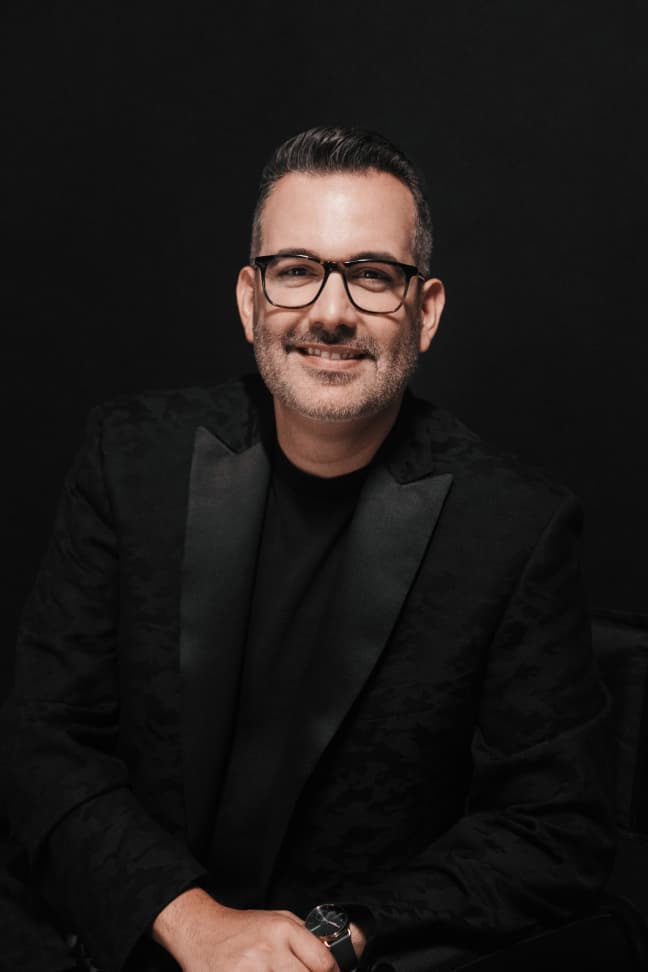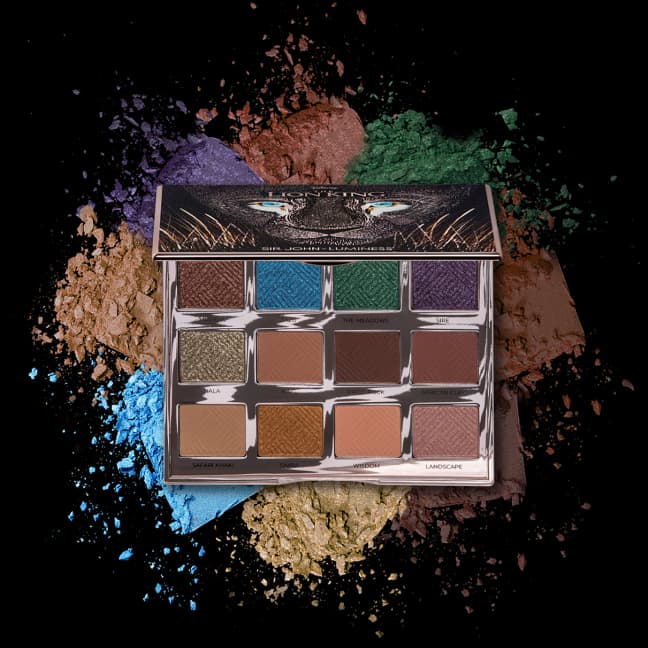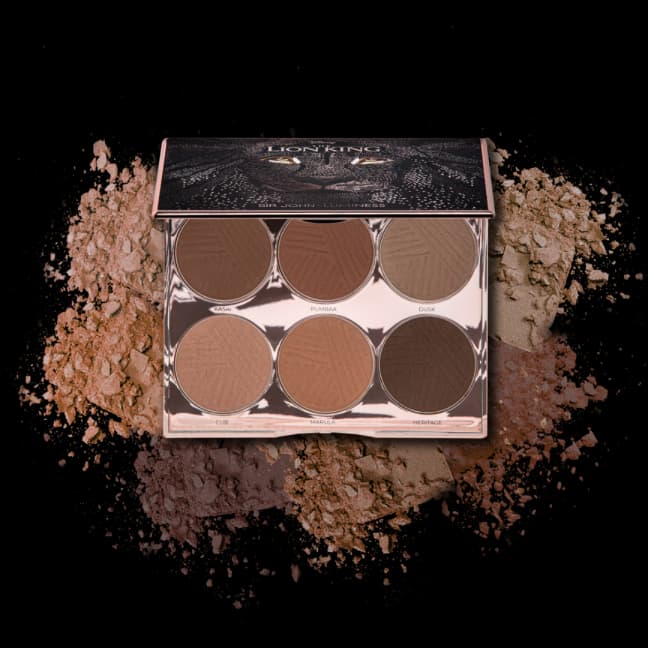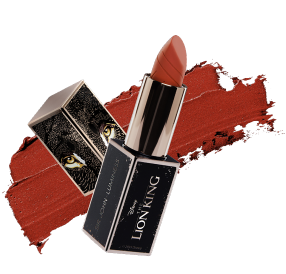How Andrew Videira, Cosmetics and Fragrance Marketing and Management MPS ’13, created a cosmetics collection to promote the remake of The Lion King
By Jonathan Vatner

In October 2018, Andrew Videira, the Houston-based chief marketing and product officer of the beauty brand Luminess, fielded a request to create a custom cosmetics collection to build buzz for the live-action remake of The Lion King. It would become the greatest challenge of his career—and serve as a model for how films can gain an unlikely boost from the beauty industry.
In a typical licensing agreement, a cosmetics brand will purchase a license for a film or other franchise, then pop a custom sleeve onto an existing makeup palette and sell to fans of the movie. The cosmetics brand trades on the franchise’s popularity to make money. With The Lion King’s makeup line, however, Disney imagined a more customized arrangement. They wanted a fully branded line, developed from scratch, whose primary purpose was to promote the film, not just capitalize on it. And Videira’s team had six months to do it.
Beyoncé was heavily involved in the film—she voiced the character of Nala and composed the soundtrack—so it was only natural that her makeup artist, Sir John Barnett, known as Sir John, would conceptualize the beauty line. He chose a color palette based on the earth tones of Africa, and Videira’s team of five developed the formulations to his specifications. They named the products and shades after characters, landmarks, and songs in the movie, like Pumbaa, Pride Rock, and Circle of Life. Typically, a license restricts or forbids the use of names from the movie, but as this was a marketing partnership, Luminess could exploit more of the intellectual property.


Videira’s team also developed art and innovative packaging concepts. In a licensing arrangement, a beauty company usually takes cues from the film to develop the packaging—but in this case, the film would not be finished until shortly before the premiere. And Disney kept the finished scenes under wraps. About once a week, the Luminess team flew to Los Angeles for a screening at Walt Disney Studios. Inside the Team Disney building, a temple-like structure held up by the seven dwarves like the caryatids at the Acropolis, Videira’s team was patted down for recording devices and ordered to place their hands on the screening room table before being shown a one-minute clip of the movie with the words “do not copy” watermarked across the screen.
But even though Videira saw very little of the movie in advance, he had the original 1994 animated version to draw from. In a beloved scene from the original, Rafiki and Simba see Mufasa’s face in the stars. The Luminess team created etched, 3D-printed packaging inspired by this constellation, a sculpting palette featuring Simba’s face and an eyeshadow palette with Nala’s. The Disney team loved the prototypes but told Videira that Nala’s eyes did not look the way they did in the live-action film.
Videira responded, “I don’t know what her eyes look like—I haven’t seen the movie!” In the animated film, her eyes were blue, but in the remake, they were yellow and brown. It was too late to change the design, so her blue eyes in the packaging became an Easter egg for the team.

The challenges kept coming. Videira took two or three business trips a week, to those micro-screenings at Disney Studios and meetings with Sir John, also in Los Angeles; to Luminess’ cosmetics factories in East Asia; and to New York City to tell magazine editors about the cosmetics line. He barely had time to catch his breath for the entire six months.
“Every day was another deadline that you could not miss,” Videira recalls.
The final collection comprised a sculpting palette, an eyeshadow palette with earth and metallic tones, a matte and liquid lipstick, a tinted lip balm, and a highlighter. An eyeliner had to be nixed because there wasn’t time to perform essential testing.
The keepsake packaging looked and felt luxurious, and it tied into the film in a meaningful way, down to the smallest details, like patterns etched into the palettes and claw marks on the lipstick.
Before launch, Videira’s team went on the biggest press tour Disney had ever done for its beauty collection—60 “desksides” with editors in a single week. It was the biggest launch Luminess had ever done, too. The strategy blended traditional beauty marketing (collaborating with influencers and magazines) with movie marketing (posters, billboards, commercials in theaters). For the premiere, Disney installed a replica of Pride Rock in the middle of Hollywood Boulevard, and Luminess provided the makeup to guests and set up a gifting lounge and photo-op area.
Disney has famously high standards, and this added an extra layer of complexity to the marketing and PR efforts. “Every piece of content, every Facebook and Instagram post, and every product shot needed to go up to [Disney CEO] Bob Iger’s office.”

The hard work was worth it, because the media went wild. Before anyone had seen the movie, the line garnered enthusiastic coverage in Vogue, Us Weekly, Byrdie, and Cosmopolitan—5 billion media impressions in all. In a full-page story, O, The Oprah Magazine called it “a gorgeous new way to take pride in your summer makeup game.” Ulta Beauty sold out of almost everything within the first 24 hours. Videira saw the items going for as much as $900 on the resale market.
“They fell in love with the look, the feel, how custom it felt,” Videira says. “There was such nostalgia with this age demographic that when the movie came out, it hit everything right.”
Promotions tied to films usually live only a few weeks; this one kept selling until The Lion King was released to on-demand streaming, six months in all. But the beauty collaboration had done its work. It not only profited Luminess, but it also generated a huge amount of buzz for the movie, which ended up grossing more than $1.6 billion worldwide.
“I have a few highlights in my career,” Videira says. “To launch a whole brand in six months, start to finish? That was at the top.”
